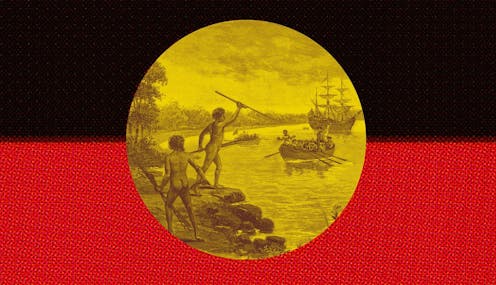histories of Australia’s frontier wars are revealing their true complexity, but there’s more to be done
- Written by Heidi Norman, Professor of Australian and Aboriginal History, Faculty of Arts, Design and Architecture, Convenor: Indigenous Land & Justice Research Group, UNSW Sydney

Historian Stephen Gapps’ latest book, Uprising: War in the Colony of New South Wales, 1838–1844, describes a coordinated Aboriginal military front across more than 20 different Aboriginal nations and language groups. The front extended for thousands of kilometres, from Port Phillip in the south to Moreton Bay in the north.
Over this extended arc, war raged for several years from the late 1830s.
Review: Uprising: War in the Colony of New South Wales, 1838–1844 – Stephen Gapps (NewSouth)
This history is revealed through detailed research of settler archives: reports, news stories, and survivor testimony. Gapps establishes that organised and coordinated bands of warriors waged a successful campaign across multiple sites, which forced the soldiers, shepherds and settlers to retreat. He calls this the “uprising” and those who waged it “warriors”.
The warriors deployed a range of tactics to terrorise the invaders, forcing many to flee their holdings. By the mid 1840s, however, the squatters became militarised and more accustomed to the warriors’ style of warfare. The parliament grew concerned to protect grazing profits. Gapps notes that the colonial population had doubled, from nearly 98,000 in 1838 to 181,556 in 1845. Horse, sheep and cattle numbers also exploded. The rush to claim land beyond the “limits of location” meant the warriors were increasingly outnumbered.
As I read Uprising, I thought about my Aboriginal family. My great-great-great-grandmother, Mary Anne Tidswell, was born in 1836, on the eve of the swarming of her Country by sheep and soldiers and the uprising of her people. By the time her second daughter was born in 1864 – my great-great-grandmother, Emma Dingwell – a new world had descended on the occupied plains of north western New South Wales.
Aboriginal and military history
In the 56 years since eminent anthropologist W.E.H. Stanner challenged historians to address the curious “silence” around the recent Aboriginal past, an enormous body of research by historians and others working in the field has transformed the discipline.
Aboriginal and Torres Strait Islander perspectives and experiences have been incorporated into accounts once dominated by colonial and settler perspectives, establishing the academic field widely referred to as Aboriginal history.



















